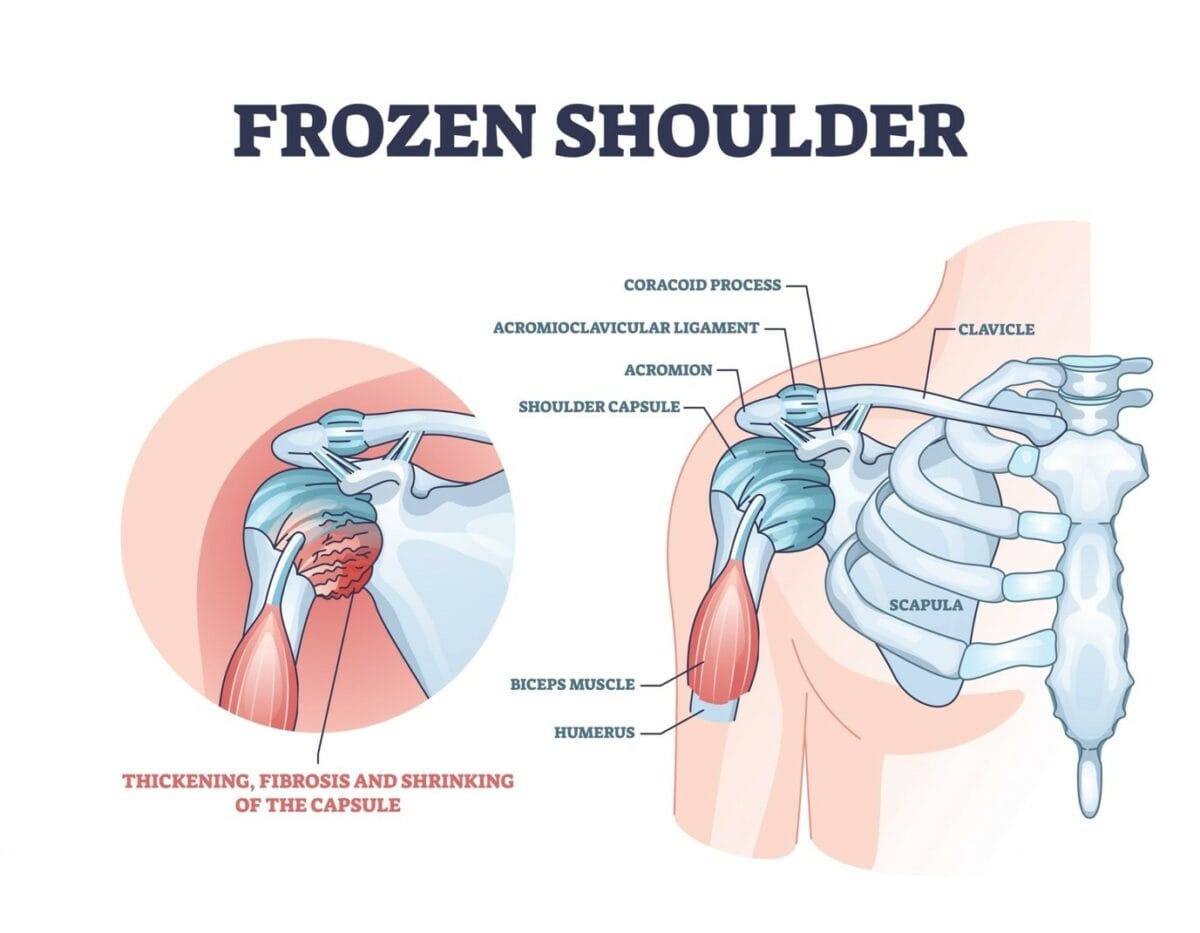Frozen shoulder, also known as adhesive capsulitis, is a condition characterized by stiffness and pain in the shoulder joint. It can significantly limit range of motion and impact daily activities. While it can be a challenging condition to manage, there are exercises and tips that can help provide relief and improve mobility. In this article, we’ll explore some easy exercises and practical tips for alleviating frozen shoulder symptoms.
Understanding Frozen Shoulder

Before diving into exercises and tips, let’s briefly understand what frozen shoulder is. Frozen shoulder occurs when the connective tissue surrounding the shoulder joint becomes inflamed and thickened, leading to stiffness and reduced mobility. The exact cause is often unknown, but factors such as injury, surgery, prolonged immobility, or underlying medical conditions can contribute to its development.
Frozen shoulder typically develops gradually and progresses through three stages:
- Freezing Stage: During this initial stage, individuals experience increasing shoulder pain and stiffness. Range of motion becomes limited, making it difficult to perform daily activities such as reaching overhead or behind the back.
- Frozen Stage: In the frozen stage, shoulder stiffness and pain may plateau, but the range of motion remains significantly restricted. Activities that require lifting or rotating the arm may be particularly challenging, and pain may persist, especially at night.
- Thawing Stage: The thawing stage is characterized by a gradual improvement in shoulder mobility and a reduction in pain. Range of motion gradually returns to normal or near-normal levels over time, although this process can take several months to years.
Easy Exercises for Frozen Shoulders

Pendulum Stretch
This exercise helps loosen the shoulder joint and improve range of motion.
- Stand or sit with your unaffected arm supported on a table or chair.
- Lean forward slightly and let your affected arm hang down.
- Gently swing your arm in small circles, forward and backward, for 5-10 minutes.
- Perform 10-15 circles in each direction gradually increasing the range of motion
Towel Stretch
This stretch targets the shoulder capsule and helps improve flexibility.
- Hold a towel behind your back with one hand and grab the other end with your opposite hand.
- Gently pull the towel upward with your top hand while gently pushing downward with your bottom hand.
- Hold the stretch for 15-30 seconds, then relax.
- Repeat several times, gradually increasing the stretch as tolerated.
Wall Walk
This exercise helps stretch the shoulder muscles and increase range of motion.
- Stand facing a wall with your fingertips touching the wall at waist height.
- Slowly walk your fingers up the wall, raising your arm as high as possible without causing pain.
- Hold the stretch for a few seconds, then walk your fingers back down.
- Repeat for 5-10 repetitions, gradually increasing the height as your mobility improves.
Cross-Body Stretch
- Use your unaffected arm to gently pull the affected arm across your body.
- Hold the stretch for 15-30 seconds, feeling a gentle stretch in the shoulder.
- Repeat on the other side.
- Perform 2-3 sets on each side, alternating between arms.
Practical Tips for Managing Frozen Shoulders:
- Apply Heat: Using a heating pad or warm towel on the affected shoulder can help relax tight muscles and increase blood flow, reducing stiffness and discomfort.
- Practice Good Posture: Maintaining proper posture throughout the day can prevent further strain on the shoulders and promote better alignment and mobility.
- Avoid Overuse: Be mindful of activities that aggravate shoulder pain and limit repetitive movements or heavy lifting that could worsen symptoms.
- Stay Active: While rest is important for healing, gentle exercise and movement can help prevent stiffness and promote recovery. Incorporate low-impact activities like walking or swimming into your routine.
- Seek Professional Help: If symptoms persist or worsen despite home remedies, consider seeking guidance from a healthcare professional or a physical therapist.
While frozen shoulder can be a frustrating and painful condition, incorporating easy exercises and practical tips into your daily routine can help alleviate symptoms and improve mobility. By including gentle exercises, practicing good habits, and seeking appropriate medical care when needed, individuals with frozen shoulders can improve mobility, reduce pain, and regain function in their shoulders.
However one should Remember to start slowly and gradually increase the intensity of exercises as tolerated. If symptoms persist or worsen, one should consult a physiotherapist for further evaluation and treatment options. With patience and consistent effort, relief from frozen shoulder is attainable.
Click here to book an appointment with a physiotherapist at one of our eight locations.
- Physiotherapy Etobicoke – Triangle Physiotherapy Etobicoke
- Oakville Physiotherapy Clinic – Triangle Physiotherapy Oakville
- Physiotherapy North York – Triangle Physiotherapy North York
- Mississauga Physiotherapy Clinics – Triangle Physiotherapy Mississauga
- Downtown Physiotherapy Clinics – Triangle Physiotherapy King West
- Uptown Physiotherapy Clinics – Triangle Physiotherapy Lawrence Park
- Physiotherapy Clinic Downtown Toronto – Triangle Physiotherapy Queens Quay
- Physiotherapy Clinics Mississauga – Triangle Physiotherapy Erin Mills
Managing frozen shoulder can be more effective with the right exercises and expert guidance. If you’re seeking support, consider physiotherapy in Etobicoke, Oakville, North York, Toronto, Lawrence Park, Queens Quay, Erin Mills, Mississauga, or Liberty Village. Experienced physiotherapists in these locations can provide tailored exercise plans and treatments to help you regain mobility and reduce pain.


